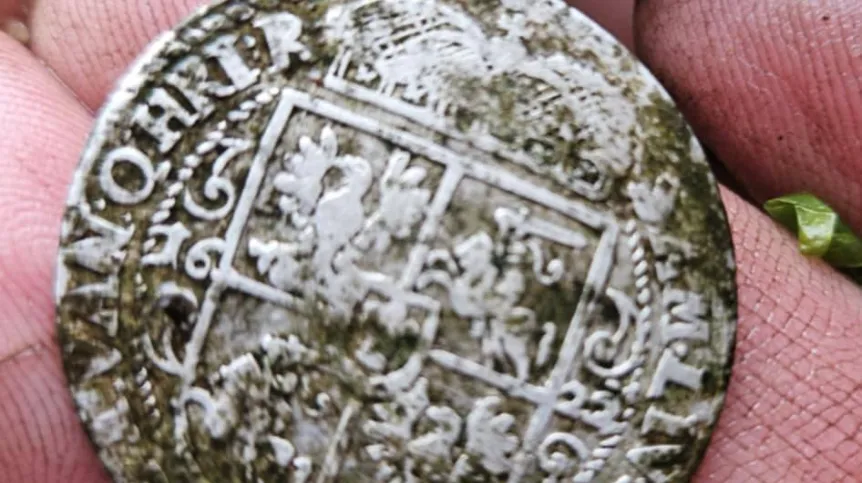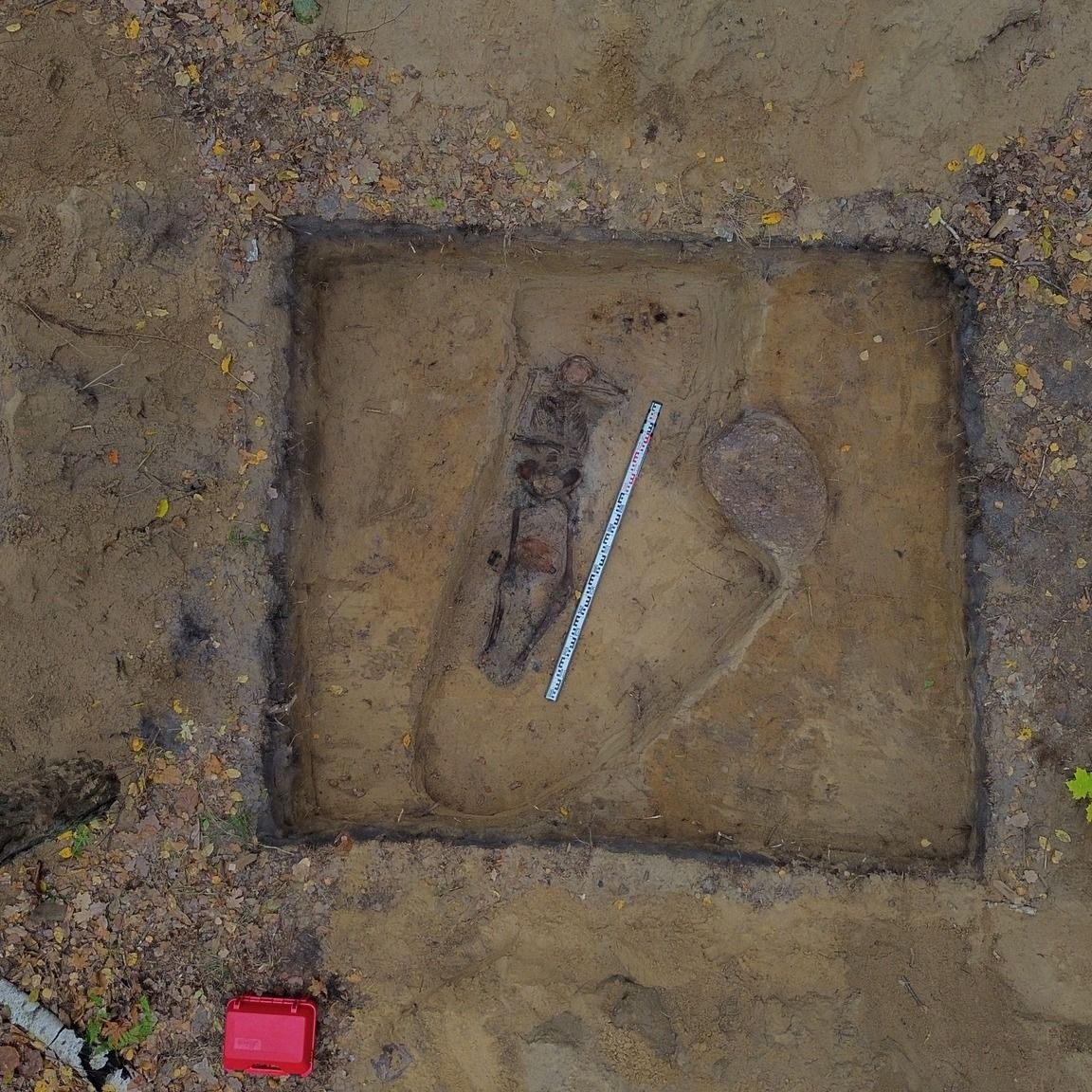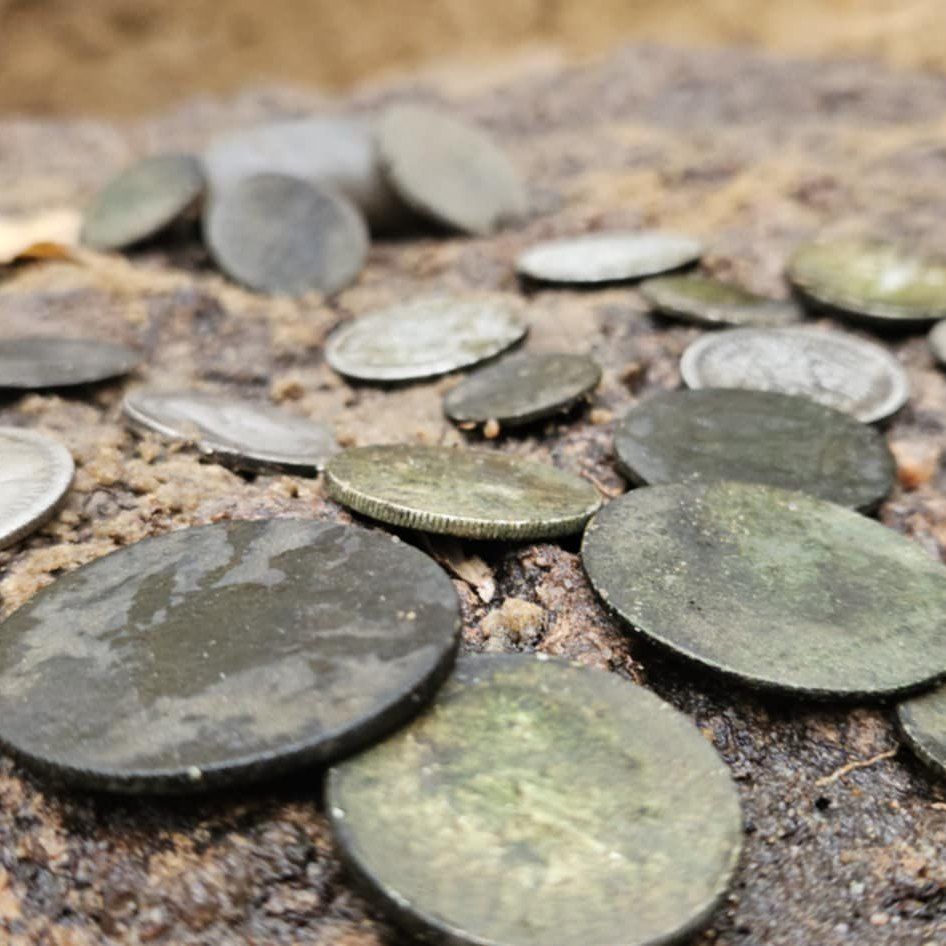
Pottery from the Neolithic Globular Amphora culture and coins from various European countries, which probably belonged to a German soldier who died in World War II - were discovered by archaeologists working in the Osie commune in the Wda Landscape Park.
Archaeologists from the Wda Landscape Park successively surveyed the park areas. In the vicinity of the Grzybek settlement, on the shore of Żura Reservoir, they found the grave of a German soldier who died in the Grzybek bridge battle in February 1945, the Wda Landscape Park representatives report.
More through work in the vicinity of the grave and exhumation work brought other, much older finds.
'This is the place where the Wda river narrows and there have always been attractive conditions for human settlement in the area. That is why it probably became a stage of events not only during World War II, but also as early as the Neolithic', archaeologist Olaf Popkiewicz, who conducted research in the Wda Landscape Park, told PAP - Science in Poland.
Pottery from the Neolithic Globular Amphora culture, dated to 3100-2600 BCE, was found at the soldier's grave. 'We managed to discover a dozen or so fragments of pottery made in a way characteristic of this culture. This is not the first find of artefacts that can be linked to the Globular Amphora culture in the Park, but this site seems to be preserved in excellent condition, as evidenced by the excellently preserved cultural layer from that period, i.e. the level of the original soil on which life took place approx. 4,000 years ago. That is what makes this place extremely valuable for studying the everyday life of Neolithic communities in the Tuchola Forest', Popkiewicz said.

The name comes from a characteristic vessel - a globular amphora used in settlements. The population of this culture led a sedentary lifestyle, engaged in livestock farming and agriculture, with animal farming being the dominant activity. At its greatest extent, its settlements covered a vast area of central and eastern Europe, from the Elbe River basin in the west to the Vistula and Dniester basins in the east, and partly the territories of modern-day Romania and Moldova.
'This means that we have traces of the settlement of the first farmers in Polish lands here', said Popkiewicz. 'We have found, among other things, an object that may be a type of charcoal kiln. We have very large quantities of tar-like substances'.
Charcoal kilns were used to store wood covered with earth and turf, for the production of charcoal.
'In the vicinity of objects of most likely Neolithic chronology, we also found microlithic tools, which may also suggest settlement from the Middle Stone Age, i.e. from the Mesolithic. Next year we plan to open further wide-area excavations, which will shed new light on the essence of the discovered archaeological site', Popkiewicz added.
On the very shore of the reservoir, relatively shallow under the surface, the archaeologists also found scattered coins, originating from different eras and areas of the whole of Europe.
'We found six Roman sesterces, next to which we also started to find other coins. The next coin in terms of seniority was a coin from the Byzantine Empire, a follis of Emperor Basil II the Bulgar Slayer, dated to the turn of the 11th century. Then there was a time jump to the coin of Sigismund III Vasa, and then there were Russian coins from the times of partitions from the Kingdom of Poland, Russian coins from the Romanov Empire, a British coin from the reign of Queen Victoria, Austro-Hungarian coins from the second half of the 19th century and Polish coins from the interwar period. In total, about 30 coins', Popkiewicz said.

He added that the coins belonged to a novice numismatist, possibly the German soldier whose remains were found near the Grzybek settlement.
'When we look at the route of the 73rd Infantry Division, in which the soldier most likely served, it coincides with the countries from which the coins originated. However, these were not circulation coins, but old, historic ones', Popkiewicz said.
PAP - Science in Poland, Ewelina Krajczyńska-Wujec
ekr/ agt/ kap/
tr. RL













